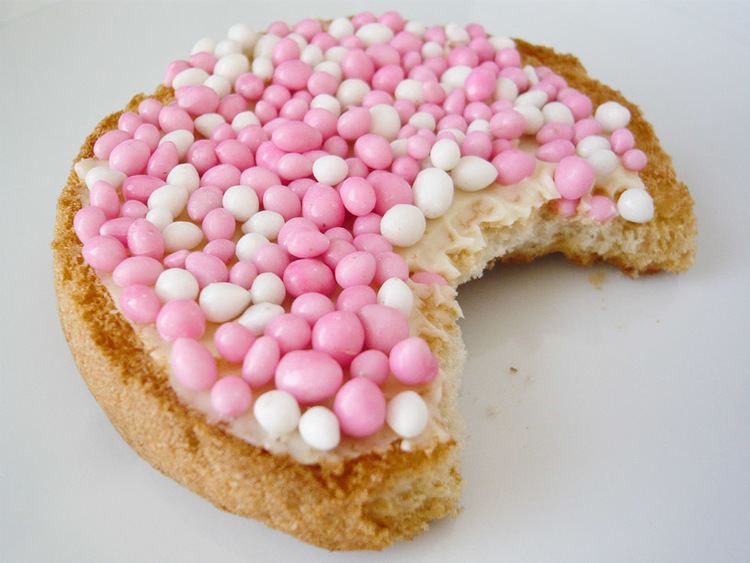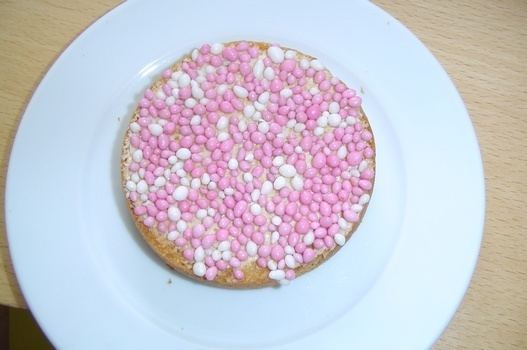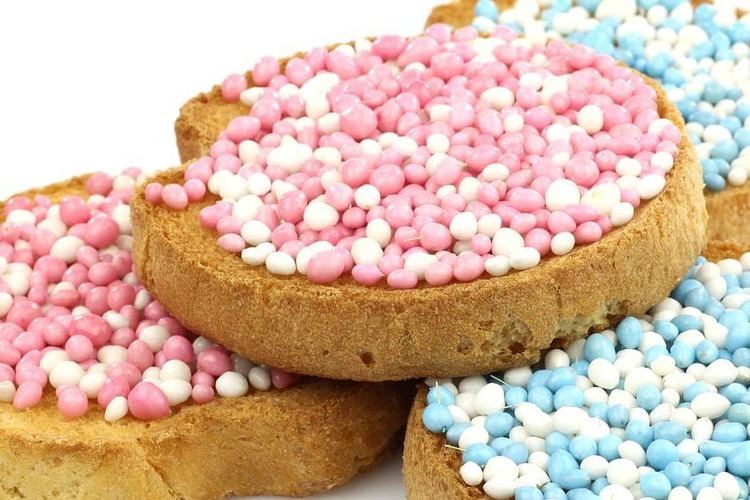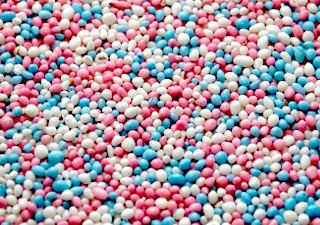Main ingredients Aniseed, sugar | ||
 | ||
Similar Beschuit met muisj, Vlokken, Zwieback, Ontbijtkoek, Stroopwafel | ||
Muisjes ( [ˈmœyʃəs]; translated little mice) are a traditional Dutch sandwich topping. While customary on bread, their most typical use is on beschuit, or rusk. Muisjes are made of aniseeds with a sugared and colored outer layer. Muisjes, meaning "little mice" in Dutch, are named because the anise seed sprinkles are shaped like little mice, with the stem of the anise seed resembling a tail. They are made by one company only, De Ruijter.
Contents

3 kleine muisjes
Beschuit met muisjes

In the Netherlands, it is a custom at the birth of a baby to eat muisjes on top of rusk--beschuit met muisjes; the anise in the muisjes was thought to stimulate lactation, and they symbolized fertility.

As early as the 17th century, the parents of a newborn baby gave away beschuit with a layer of butter and muisjes to the baby's visitors. This tradition continues today. Beschuit with Muisjes are given to the baby's visitors at home, and are brought by older siblings to share at school; or are presented to colleagues at work. Every supermarket in the Netherlands sells boxes of muisjes. "De Ruijter" is currently the only brand in production of muisjes. They have been making them since 1860.

Before the 20th century, visitors to a newborn baby got only white muisjes, then this changed to a mix of pink and white muisjes for both boys and girls. With the introduction of blue muisjes, pink muisjes are now reserved for baby girls only.

Orange muisjes were sold for only one week in December 2003, in honour of the birth of future crown princess Catherina-Amalia, as orange is the color of the Dutch royal family, the House of Orange-Nassau. They were also eaten in 1938 at the birth of Queen Beatrix.
Gestampte muisjes

Gestampte muisjes ("crushed muisjes") are muisjes crushed to powder, which are sprinkled onto a slice of bread or a Dutch rusk over butter, a customary breakfast food for Dutch children.
